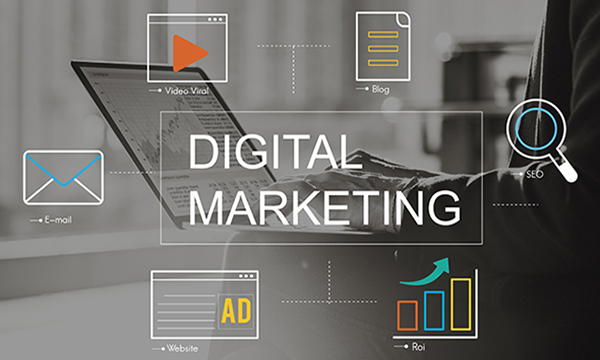Last week, two of our team members at ASTOUNDZ jumped into the grind at the State of Search SEO conference in Grapevine, Texas.

Blog Category pages subscription form.

Paid ads are advertisements that businesses pay for to promote their products or services across various online platforms. These ads will appear on search engines, social media, websites, and apps. They are designed to reach specific audiences through targeted settings, such as demographics, interests, and behaviors. Popular types of paid ads include Pay-Per-Click (PPC), display ads, and social media ads, helping businesses achieve visibility and conversions more quickly than organic methods..

Last week, two of our team members at ASTOUNDZ jumped into the grind at the State of Search SEO conference in Grapevine, Texas.

If your keyword rankings or SEMrush reports suddenly dropped in September, you weren’t alone.

In today's digital world, it's more important than ever for businesses to stand out online. One of the best ways to do this is through paid search. But what exactly does that mean? Paid search is when businesses pay for their ads to appear at the top or bottom of...

AI is changing the way brands connect with people. In digital marketing, AI helps businesses make smarter decisions by understanding customer behavior, creating personalized content, and automating tasks. Let's take a closer look at how AI is shaping the future of...

Website development is changing fast! New technologies are popping up all the time, and they're making websites more powerful, interactive, and user-friendly. In this article, we're going to explore the cool emerging technologies that are shaping web development today...

In today's digital world, the way we access websites has changed drastically. People are spending more time on their smartphones than ever before, and businesses need to keep up with this shift. Mobile-first design is the solution. This approach focuses on creating...

Social media ads are a game-changer for businesses today, offering a world of potential. With billions of people using social media every day, platforms like Facebook, Instagram, TikTok, and LinkedIn are more than places to post pictures and updates—they're powerful...

In today's fast-paced digital world, online shopping is more popular than ever. As e-commerce continues to grow, new technologies are shaping the way we search for products and make purchases. One of the most exciting developments is voice search optimization. More...

In the ever-evolving world of digital marketing, Search Engine Optimization (SEO) continues to play a pivotal role in driving online visibility, traffic, and conversions. As we move into 2025, SEO remains at the core of online marketing strategies, but its landscape...

In today's fast-paced digital world, businesses need creative and effective ways to get noticed. With so much competition online, it can be hard for a brand to stand out. This is where display advertising comes in. If you're looking to reach a wider audience, digital...

The concept of paid ads dates back to the early days of print media when businesses purchased space in newspapers and magazines. With the rise of radio and television, paid advertising expanded into broadcast media, reaching mass audiences. The advent of the internet brought a new era of digital advertising, starting with banner ads in the 1990s. Today, paid ads dominate digital spaces, with highly targeted platforms like Google Ads, Facebook Ads, and programmatic advertising reshaping how businesses connect with potential customers.
Paid Ads: Ads that require payment are to be displayed on digital platforms like search engines, websites, and social media.
PPC (Pay-Per-Click): An advertising model where the advertiser pays each time a user clicks on their ad is widely used in search engine marketing.
CPC (Cost Per Click): The amount paid for each click on an ad is calculated by dividing the total cost by the number of clicks received.
CPM (Cost Per Mille): The cost of displaying 1,000 ad impressions is commonly applied in display and social media advertising.
Google Ads: A popular platform where businesses create ads that appear in Google search results and on its partner sites.
Facebook Ads: An ad platform allowing businesses to create and target ads on Facebook, Instagram, and the Facebook Audience Network.
Display Ads: Visual ads, such as images or videos, are shown on websites or within apps as part of a display network.
Remarketing: Retargeting ads to users who previously visited a site, helping to re-engage them with the brand or product.
Ad Extensions: Additional details are displayed with search ads, like phone numbers, locations, or extra site links.
CTR (Click-Through Rate): The ratio of users who click on an ad after viewing it indicates ad effectiveness.
Ad Rank: A score determining a search ad’s placement based on bid amount, ad quality, and extensions.
Landing Page: The webpage users reach after clicking an ad should be designed to encourage conversions.
Ad Copy: Text within an ad is crafted to capture attention and engage the audience.
Conversion Rate: The percentage of ad-clicking users who complete a desired action, like making a purchase.
Quality Score: A Google Ads metric is evaluating the relevance and quality of keywords, ads, and landing pages.
Bid Strategy: An approach to maximize ad outcomes, such as using manual bidding, target CPA, or focusing on conversions.
Geotargeting: Delivering ads based on users’ geographic locations is particularly beneficial for local businesses.
Target Audience: A specific group of individuals that ads aim to reach, selected by demographics, behavior, and interests.
ROAS (Return on Ad Spend): A metric assessing revenue generated for each dollar spent on advertising.
A/B Testing: Testing two versions of an ad to identify the better performer and refine the campaign.
Dynamic Search Ads: Search ads are created automatically from website content, helping to capture keywords that are not targeted manually.
Automated Bidding: A strategy where ad platforms adjust bids automatically to achieve specific goals, like maximizing conversions or clicks.
Ad Scheduling: Setting certain days or times for ads to run, ensuring they reach the target audience at optimal moments.
Negative Keywords: Keywords that prevent ads from appearing in irrelevant searches, helping refine targeting.
Ad Fatigue: Reduced ad effectiveness when users become overly familiar with the same ad, signaling a need for fresh content.
Ad Placement: The specific location where an ad appears, such as on search results pages or a particular website.
Impression: In each instance, an ad is displayed to a user, regardless of engagement.
Ad Spend: The total amount spent on running ads over a specified time.
Call Ads: Ads intended to prompt users to call a business directly from their mobile device.
Lookalike Audience: A targeting method that identifies users similar to a brand’s current customers is often used in social media ads.
Attribution Model: A framework assigning credit to various ad interactions that lead to a conversion.
Smart Campaigns: Google Ads campaigns are optimized for simplicity, which is ideal for small businesses looking for ease of use.
Responsive Search Ads: Ads that adjust their text combinations dynamically to display the highest-performing versions.
Callout Extensions: Additional text snippets in search ads that highlight a business’s key benefits.
Expanded Text Ads: Search ads allow more characters in headlines and descriptions for detailed messaging.
CPA (Cost Per Acquisition): The cost of gaining a new customer or leading through an ad campaign.
Ad Campaign:
A collection of ad groups with shared settings, budget, and location targeting focused on a specific goal.
Media Buying:
Purchasing ad space across platforms to promote products or services.
Ad Retargeting: Serving ads to users who visited a site previously but didn’t complete a conversion.
Customer Match: A targeting technique that uses customer data to display ads to a specific audience across Google.
Frequency Capping: Restricting the number of times an ad shows to a user to prevent overexposure.
Programmatic Advertising: Automated buying and placing of ads using software, offering precise audience targeting.
Ad Groups: Sets of related ads within a campaign that focuses on similar themes or keywords.
Video Ads: Ads in video format are often used on platforms like YouTube and social media for impactful storytelling.
Shopping Ads: Product-centered ads appear in search results, displaying product prices, images, and links to the product page.